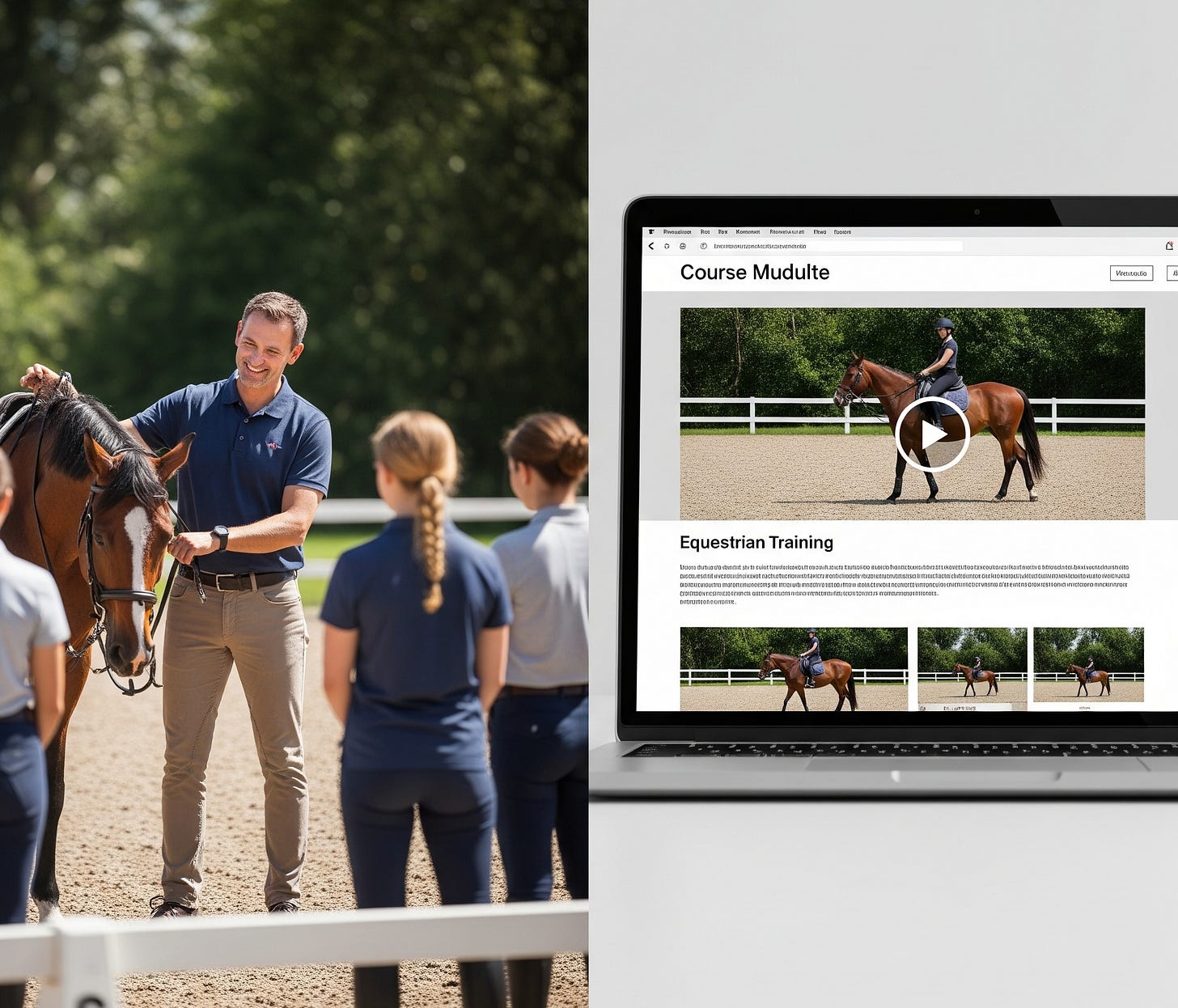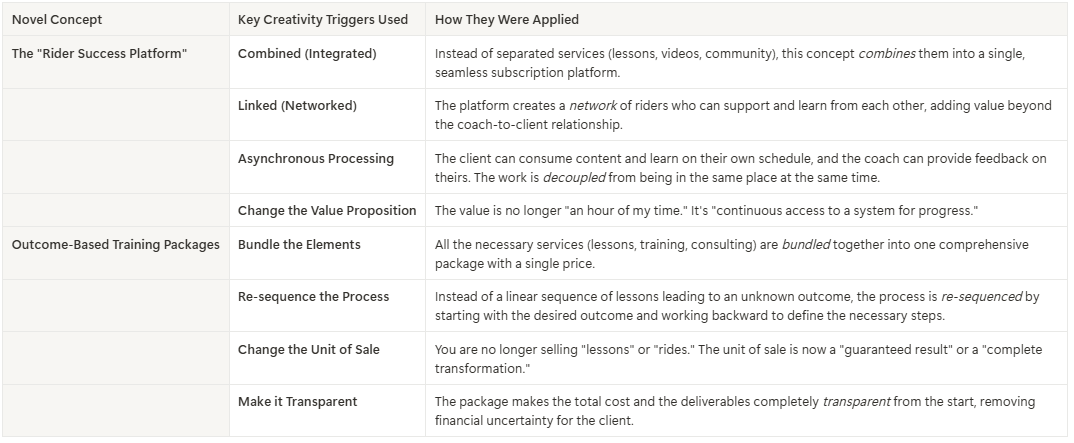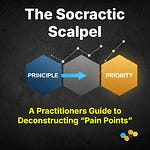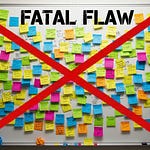Introduction: The Passion and the Paradox
You know the feeling. It’s that quiet moment at the end of a long day when the barn is finally still. The air smells of hay and horses, a scent that’s more comforting to you than any perfume. You’ve spent the last ten hours on your feet—teaching, riding, lunging, managing. You’ve celebrated a student’s first canter, diagnosed a subtle lameness, and mentally choreographed a dressage test for a client’s upcoming show. You do it because you love it. This isn't just a job; it's a calling. The connection with these incredible animals and the joy of helping riders achieve their dreams is a reward that’s difficult to quantify.
But then there's the other side of the coin, the paradox you live with every day. You look at your overflowing schedule, your aching back, and then your bank account. The numbers don't add up. Despite your immense skill, your years of experience, and your relentless work ethic, financial stability feels like a distant dream. You're trapped in a cycle of trading every available hour for a fixed dollar amount, and you've run out of hours to trade.
If this feels familiar, I want you to know you're not alone. And more importantly, I want you to understand that the problem isn't your passion, your skill, or your work ethic. The problem is the business model.
The traditional equestrian professional's business model is a relic from a different era, and it's fundamentally broken. It's holding talented professionals like you back, leading to burnout and financial precarity. But there is a different way. The path to a more profitable and sustainable career doesn’t lie in working harder; it lies in working smarter. It requires a fundamental shift in how you think about the value you provide. It’s time to stop selling your time and start selling outcomes.
The Time-for-Money Trap: Acknowledging the Grind
For decades, the equestrian industry has operated on a simple, unquestioned equation: one hour of your expertise equals one fee. Whether it’s a private lesson, a training ride, or a session of barn management, your income is directly tied to the ticking of a clock. While straightforward, this model creates a brutal and unforgiving trap.
The Hard Ceiling on Your Income
The most obvious flaw in the time-for-money model is that it has a hard, mathematical limit. There are only 24 hours in a day, and you can only physically work for a fraction of them. Let's say you can sustainably teach or ride for six to eight hours a day, five or six days a week. Once you hit that capacity, your ability to earn more money stops. Completely.
You can't create more time. The only lever you have to pull is raising your rates. While necessary at times, there's a limit to what the market will bear, and it doesn't solve the underlying structural problem. You're still on the hamster wheel; you're just getting paid a little more for each rotation. This model actively punishes you for your own efficiency and experience. A problem you can solve for a student in 15 minutes is billed for less than the one that takes an hour, even if the value of the quicker solution is immense.
The Unseen Costs of Burnout
This relentless grind doesn't just cap your income; it extracts a heavy toll on your well-being.
Physical Exhaustion: This is the most obvious cost. The physical demands of riding multiple horses, walking miles around an arena, and being on your feet all day lead to chronic pain, injuries, and sheer exhaustion.
Mental and Emotional Drain: Every lesson requires your full presence. You are a coach, a therapist, a strategist, and a risk manager all at once. This constant output of mental and emotional energy is incredibly draining, leaving little room for your own personal growth, your own riding, or even your family.
Stifled Professional Development: When you're constantly working in your business, you have no time to work on your business. There's no time to attend clinics to further your own education, research new training methodologies, or develop new programs. Your growth as a professional stagnates because the business model demands your every waking hour just to keep the lights on.
You're left vulnerable. A lame horse, a sick student, a week of bad weather, or a personal injury can devastate your income. The time-for-money trap creates a fragile existence with no safety net, and it's time we acknowledged that it's an unsustainable way to build a career.
A New Mindset: What Job Are Your Clients Really Hiring You For?
The first step out of the trap is a radical mindset shift. It begins with one simple question: What are your clients really buying? I can guarantee you it’s not “an hour of your time.” They are hiring you to get a job done.
Introducing Jobs-to-be-Done
Jobs-to-be-Done (JTBD) is a powerful innovation framework that helps you see your business through your customers' eyes. The core idea is that customers don't buy products or services; they "hire" them to make progress in their lives—to get a job done. A rider doesn't hire you to fill an hour on their schedule; they hire you to help them achieve a goal, overcome a struggle, or experience a desired feeling.
This might sound simple, but it changes everything. When you stop thinking about the service you're providing (a lesson) and start focusing on the job the client is trying to accomplish, you open up entirely new avenues for creating value.
From "Giving a Lesson" to "Creating Confidence"
Think about your last few clients.
Was the adult amateur who struggles with anxiety really buying a lesson, or was she trying to get the job of "feeling safe and confident with my horse" done?
Was the ambitious teenager preparing for a competition really buying a training ride, or was she hiring you to "prepare my horse for competition successfully"?
Was the new horse owner really buying a consultation, or were they trying to get the job of "building a strong partnership with my new animal" done?
When you frame it this way, you realize the one-hour lesson is just one possible solution for getting that job done. And in many cases, it’s not even the most effective or efficient one. That rider who needs confidence might get more value from a 20-minute unmounted session on mindset, a curated video on managing show-ring nerves, and a 30-minute group session with other supportive riders than from a single, isolated one-hour lesson.
Understanding the real job allows you to move up the value chain. You’re no longer just an instructor; you're a confidence-builder, a performance coach, a partnership facilitator. And those jobs are worth far more than an hour of your time.
Elevating the Abstraction: Two Paths to a New Business Model
Once you understand the job your client is hiring you to do, you can begin to innovate how you get that job done. This is about "elevating the level of abstraction." Instead of focusing on the individual, low-level tasks (scheduling, teaching a specific movement, taking a payment), you create a higher-level solution that gets the entire job done better, more efficiently, and often at a lower cost in time and resources for both you and your client.
Here are two paths to explore, one you can start today and one that points to a revolutionary future.
Path 1: What’s Working Today (For a Few Innovators)
You don't need a venture capital-funded tech startup to begin breaking free from the time-for-money trap. Innovative professionals are already implementing these concepts.
Concept: The Group Coaching Model
The simplest way to break the one-to-one time-for-money link is to move to a one-to-many model. This is more than just a traditional group lesson. It's about designing focused, outcome-driven group programs.
How it gets the job done better: Instead of isolated lessons, you create a supportive, cohort-based experience. A rider trying to "build confidence" now has a community of peers sharing the same struggle and celebrating successes together. This peer support can be just as valuable as your direct instruction.
Examples:
Themed Clinics: A "Trail Rider's Confidence Clinic" or a "Dressage Test Mastery Workshop."
Multi-Week Programs: A six-week "From Green to Great" program for owners of young horses, combining group riding sessions with unmounted theory classes.
Community of Practice: A monthly membership for adult amateurs that includes one group clinic, one "office hours" Q&A call via Zoom, and a private online forum.
Concept: Digital Leverage
Your knowledge is your most valuable asset. The time-for-money model forces you to rent it out one hour at a time. Digital products allow you to package it once and sell it infinitely.
How it gets the job done better: It provides your clients with on-demand access to your expertise. The rider who needs to "master the flying change" can now watch your detailed video tutorial ten times the night before their lesson, arriving prepared to make the most of your in-person time. It provides them with support between lessons, which is often when they need it most.
Examples:
Downloadable Training Plans: A 30-day fitness plan for the event horse.
Video Courses: A multi-module course on "Foundations of Groundwork."
Remote Video Coaching: Clients send you a video of their ride, and you send back a detailed voice-over analysis with actionable feedback. This is an incredibly high-value service that can be done on your own schedule.
Path 2: The Future of Equestrian Coaching (Novel Concepts)
The concepts above are powerful, but they are still based on delivering services and products. The true future lies in abstracting the work away entirely by creating integrated systems and selling guaranteed outcomes. This is where we leap from a better version of the present to a truly different future.
Novel Concept A: The "Rider Success Platform"
Imagine you’re not selling lessons or clinics or videos. You’re selling membership to a holistic system designed for rider success. This is a subscription-based digital platform, a community hub, and a remote coaching service all rolled into one.
How it gets the job done completely differently: This solution gets the higher-level job of "achieving my riding goals" done in a novel, integrated way. A rider doesn't have to piece together solutions—a lesson here, a YouTube video there, a question in a Facebook group over there. Your platform provides a single, seamless environment for their entire journey. It abstracts away the friction of scheduling, payments, and information-seeking. The job performer could even change; this might be the perfect tool for a self-motivated rider who doesn't have the budget or time for traditional weekly lessons but is serious about making progress.
What it looks like:
Personalized Learning Paths: When a new member joins, they set a goal (e.g., "Complete my first Novice level event"). The platform generates a customized path of video tutorials, training exercises, and fitness plans for them to follow.
Integrated Feedback Loop: The rider uploads videos of their training to a private portal. You (or a team of coaches) provide feedback directly on the platform. Progress is tracked over time with clear metrics.
Community & Accountability: Members are part of a private, supportive community where they can share wins, ask questions, and find encouragement. You host regular "ask me anything" sessions and guest expert workshops.
Resource Library: A searchable vault of all your knowledge: articles, videos, gear recommendations, and downloadable guides.
This isn't just a website with videos; it's an engine for progress. Your role shifts from hourly instructor to the architect and guide of this success system. You serve hundreds of clients simultaneously, and your income is recurring and detached from your physical presence.
Novel Concept B: Outcome-Based Training Packages
This is perhaps the most radical shift in the value proposition. You stop selling your process (lessons, training rides) and start selling the result.
How it gets the job done better and with less cost: This model directly attacks the core anxiety of the client: "Will I get the result I want for the money I'm spending?" By guaranteeing an outcome, you remove that risk. This commands a premium price because you are selling certainty, not just activity. It gets the job of "competing successfully" or "having a safe trail horse" done better because the entire program is reverse-engineered from that specific goal, eliminating wasted time and effort on activities that don't contribute to the outcome. All the disparate services are bundled into one cohesive package with one price, reducing the cognitive load for the client.
What it looks like:
The "Show Ready in 90 Days" Package: Instead of selling a block of 12 lessons, you sell a three-month intensive program for a fixed price. It includes a specific number of private lessons, training rides, remote video check-ins, a show-day coaching plan, and even nutrition and farrier consultations. The price isn't based on the sum of the hours; it's based on the value of arriving at the show confident, prepared, and ready to perform.
The "Bombproof Your Horse" Package: A six-month program designed to produce a safe, reliable partner. You're not selling 24 training rides; you're selling the feeling of security and trust a client will have on the trail. The package guarantees the horse will be able to handle specific scenarios (traffic, water crossings, dogs) by the end of the program.
This model requires you to be exceptionally good at what you do, but it allows you to charge for the true value you create, completely shattering the time-for-money ceiling.
Creativity Trigger Reference Table
To develop these novel concepts, we can lean on established creativity triggers. Here’s a look at how these ideas were formed, giving you a framework for your own brainstorming.
Making It Real: Your First Steps Off the Hamster Wheel
Reading about these ideas is inspiring, but inspiration without action is just entertainment. Shifting your business model is a journey, not an overnight switch. Here are three concrete, manageable steps you can take this week.
Step 1: Define the Real Job
Set aside 30 minutes. Forget about what you do and make a list of what your clients achieve. Talk to five of your favorite clients. Don't ask them if they liked their last lesson. Ask them bigger questions:
"When you first came to me, what was the one thing you were hoping to change or achieve?"
"When you think about the perfect day with your horse, what does that look like and feel like?"
"What's the most frustrating part of your riding journey right now?"
Listen for the emotional, outcome-oriented language. You're not listening for "I want to get my horse on the bit." You're listening for "I want to feel that harmonious connection," or "I want to go to a show and not feel like I'm going to throw up." Write down the top 3-5 "Jobs" you discover.
Step 2: Package Your Wisdom
Identify the single most common piece of advice you give. What's the concept you explain over and over again?
Is it about how to manage a spooky horse?
Is it your theory on proper flatwork for jumpers?
Is it your five-step process for preparing for a show?
Now, package it. Don't build a whole course. Just start with one thing. Record a 10-minute video on your phone explaining it. Write a two-page PDF guide. This is your first "digital asset." You can give it away for free to your current clients as a value-add, or you can try selling it for a small amount, like $20. The goal isn't to get rich; it's to prove to yourself that you can create value that exists outside of a scheduled hour.
Step 3: Initiate a New Conversation
The next time a potential new client calls you and asks, "How much are your lessons?" try a different response. Acknowledge their question, but pivot.
Say something like, "My standard rate is X, but before we talk about that, can you tell me a bit about what you're hoping to achieve with your horse? What's your big goal for this year?"
This simple change reframes the entire conversation from a transaction about price to a consultation about value. It positions you as an expert problem-solver, not an hourly commodity. It's the first step in educating your market about a new and better way of working with you.
Conclusion: Your Value is More Than Your Time
The equestrian world is built on tradition, but the tradition of the overworked, underpaid professional is one we must leave behind. Your passion is too valuable, and your skill is too profound to be confined to the limitations of a broken business model.
Embracing these new models isn't about abandoning the hands-on work you love. It's about creating a sustainable and profitable structure around it, one that rewards you for the incredible value you create. It allows you to have a greater impact, helping more people and more horses, while also building a financially secure and personally fulfilling career.
The future doesn't belong to the professional who can squeeze the most lessons into a day. It belongs to the innovator who understands that their true job is not to fill an hour, but to facilitate a transformation. Your value is not in your time; it's in your wisdom, your experience, and your unique ability to help a rider and horse achieve their goals. It's time you built a business that reflects that truth.
What is the single biggest barrier you face when thinking about changing your business model? Share your thoughts in the comments—let's tackle this together.
Follow me on 𝕏: https://x.com/mikeboysen
If you’re interested in inventing the future as opposed to fiddling around the edges, feel free to contact me. My availability is limited.
Mike Boysen - www.pjtbd.com
De-Risk Your Next Big Idea
Masterclass: Heavily Discounted $67
My Blog: https://jtbd.one
Book an appointment: https://pjtbd.com/book-mike
Join our community: https://pjtbd.com/join













